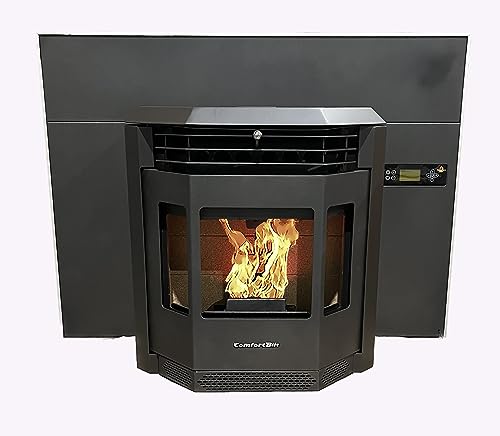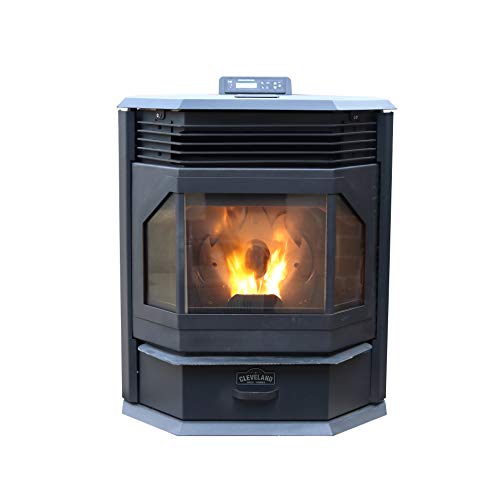Nine Things That Your Parent Teach You About Pellet Stove Clearance Sa…
페이지 정보
작성자 Karolyn 작성일24-12-15 18:33 조회14회 댓글0건관련링크
본문
 Benefits of a pellet stoves with thermostat stove clearance sale (Look At This)
Benefits of a pellet stoves with thermostat stove clearance sale (Look At This)contemporary pellet stove stoves provide efficient, affordable heat for your home. They also offer you more control over your heating system than a stove that burns wood.
 But, choosing the best pellet stove inserts pellet stove for your needs requires careful analysis. Early action can help to ensure that the model you prefer will be available and ready to be installed as winter draws near.
But, choosing the best pellet stove inserts pellet stove for your needs requires careful analysis. Early action can help to ensure that the model you prefer will be available and ready to be installed as winter draws near.Benefits
Pellet stoves offer a variety of benefits to homeowners that can improve their comfort and energy efficiency. They can produce lots of heat and lower heating bills. They are a great option for families looking to switch to an eco-friendly alternative to traditional wood-burning fireplaces or gas units.
Pellets are more affordable and require less storage space than other fuels. They also burn cleaner than open fires, and produce less harmful emissions. Pellet stoves are also simpler to use than their counterparts with fireplaces, and many feature automated features such as thermostatic controls and automatic pellet feeding systems that guarantee the same temperature without the need for manual intervention. Many of these stoves feature advanced features such as remote and smartphone/internet control options that allow homeowners to control their stoves from anyplace in the world.
Pellets that are of good quality will be evenly burned and last longer than other fuels. The cost of pellets has remained steady over time when compared to other sources of energy. A pellet stove can heat up to 2,500 square feet of space for just four dollars per day, depending on the size and heat setting of your home.
These stoves may be purchased at a lower cost after the holidays. Retailers might lower the cost of these units in order to clear their inventory and create space for a new year's inventory. As such, this is the ideal time to buy a new pellet stove for your home.
Pellet stoves can heat up 2,500 square feet in a day for $4. These heaters have a very high energy efficiency rating, which helps to cut down on energy costs and carbon emissions. To further reduce your environmental footprint you can look into tax credits and eco-rebates offered by the government which can help offset the price of your new heater.
Despite the benefits of a pellet stove however, it is important to remember that these appliances require electricity to operate their automated features and fans. In the event of a power outage, they won't be able function. If the stove has an electric backup battery or manual ignition, it can be operated in such a situation.
Installation
Installing a stove requires carpentry and knowledge of local building codes. It is recommended to hire a professional in case you're not familiar with working with wiring and electricity. Before you begin the work, ensure there is no power running to the wires you'll work on, and that your electrical circuit breaker can take the weight of the stove. To shield your floor from the heat of the stove, a hearth board or pad is vital. You'll also want to decide how you will vent your stove. Freestanding stoves need chimneys to exhaust fumes away from your home. Wall-mounted stoves, however, can vent directly through walls and are an excellent choice for smaller rooms.
The first step to install a freestanding pellet stove is to build a chimney liner which connects to the stove's exhaust port which is usually located on top of the stove. You'll then need to drill through the exterior wall and create an opening with a screen at the top of the house.
Pellet stoves can be vented through the back or side walls of your house, but you must follow the guidelines of the manufacturer as well as local regulations to ensure the safety of your family members and pets. Most stoves only require three inches of clearance from combustible materials. This is less than wood fireplaces and stoves. Consult the manual of your stove to determine what clearances are required for your model.
If you opt for a wall-mounted appliance you can opt for the straight vertical vent. It is the most common vent, and also the cheapest. You'll still need to install an uncombustible floor protector, a hearth pad or board, and you'll have to purchase a 4" diameter pipe (regardless of the actual EVL). This kind of venting is more efficient than older venting methods that required the use of a horizontal line connected to the roof.
If you have an existing chimney, you'll need to utilize a flexible or a rigid chimney liner made of steel to funnel the exhaust fumes away from the stove. It is also necessary to remove the chimney cap and replace it with an alternative one when you're ready to install your pellet stove. Install carbon monoxide alarms around your home, particularly near sleeping areas.
Maintenance
Many people are surprised to find out that a pellet stove requires regular maintenance, in addition to routine cleaning. While you can do most of the basic maintenance on your own however, it is recommended that a qualified technician conduct an intensive cleaning once per year. The annual cleaning isn't only a safety inspection it can also help maintain the maximum efficiency of your stove as well as its longevity.
The recommended time at which you should clean your stove will be contingent on how often you use it, as well as the quality of the pellets that you use. You can find out the recommended interval in your owner's manual or from an expert technician who knows about the specific stove you have.
It is important to empty and scrape the burn pot and other areas of the stove frequently. This will help to avoid the buildup of carbon which could impede air flow and cause poor combustion. It is important to remove any clinkers. These are burned pellets that have fused together and become too big to be able to pass through the auger and into the ash pan.
You can also conduct a basic visual check of your stove. This can help you spot any problems before they become major problems, such as a loose fan belt or grate bars that need to be tightened. Also, you should test any electrical sensors to make sure they're functioning properly and check if they need replacement or cleaning.
It is essential to clean the feed system and hopper at the end of each heating season to avoid them from rusting. It is also recommended to take any pellets that aren't being used up from the stove before covering it for the season. This will prevent problems when you start the stove the first time in the winter.
Professionals can also help you with other crucial stove-related tasks, such as replacing the ash pan lines and blower motor brushes. They can also lubricate the fans and motors to help prolong their lifespan and reduce friction. They can also replace the gaskets on hopper lids, ash pan, and doors to the fire chamber to ensure that they're secure.
Selecting a Stove
It is important to purchase a wood stove or tiny pellet stove stove early in order to be prepared for the cold winter season that is fast approaching. By leveraging off-season discounts and prioritizing timely preparation before winter arrives and they'll be able secure their preferred models and install them at their own convenience. This proactive approach eliminates the stress associated with last-minute rushes and ensures that their homes will be warm and cozy throughout winter.
Pellet stoves, like any other heating system, are susceptible to mechanical failures and electrical outages. Therefore, it's critical that homeowners select stoves with high-quality components and a broad warranty program. The most reliable brands offer up to five years of warranty on the major components including the electronic board as well as the spark plug, gearmotor, tangential fan, and smoke extractor. When choosing a stove homeowners should also look into available spare parts and their prices. This is crucial because it could be difficult to locate some of these essential parts after the warranty period has expired.
Homeowners should consider the space required for a pellet stove, as some require a flue connection to vent fumes and smoke outdoors. Federal safety standards require that these appliances be placed at least 3 feet away from any flammable materials. Some are designed to draw air out of the living space without the need for vents outside the home.
When comparing different pellet stoves, it is essential to evaluate the heat outputs to determine which one best suits your home's heating requirements. The greater the output of heat, the more efficient a specific stove is and the more fuel it can burn before needing to be filled.
Homeowners should also be aware of the options for fuel available for each model of pellet stove they're thinking of buying. Some use a hopper system that automatically feeds pellets into the firebox, while other models require the user to manually load sacks of pellets. Many models have thermostat controls that can be used with smart home systems to automatically adjust the temperature.
Homeowners should be aware that the fans and controls of pellet stoves require electricity. They won't function in the event of a power loss without a battery backup or backup generator. However, some manufacturers offer an alternative power source to fulfill this purpose, which can be an excellent benefit for homes in areas prone to frequent outages.
댓글목록
등록된 댓글이 없습니다.
